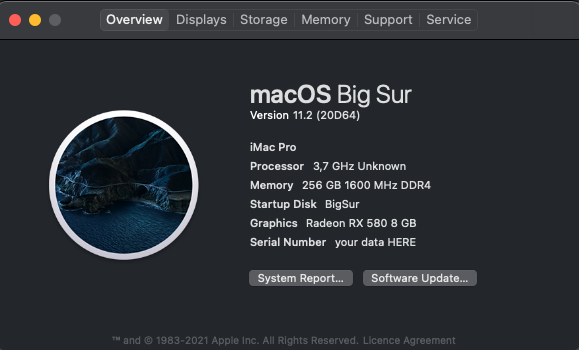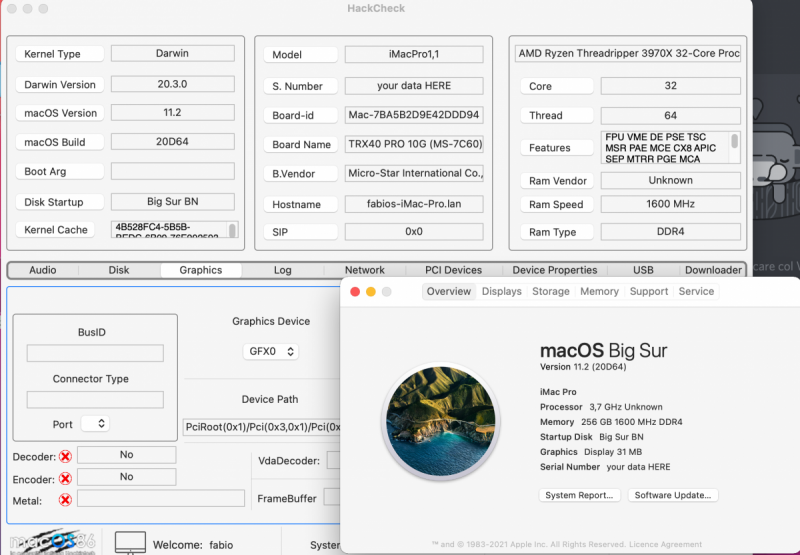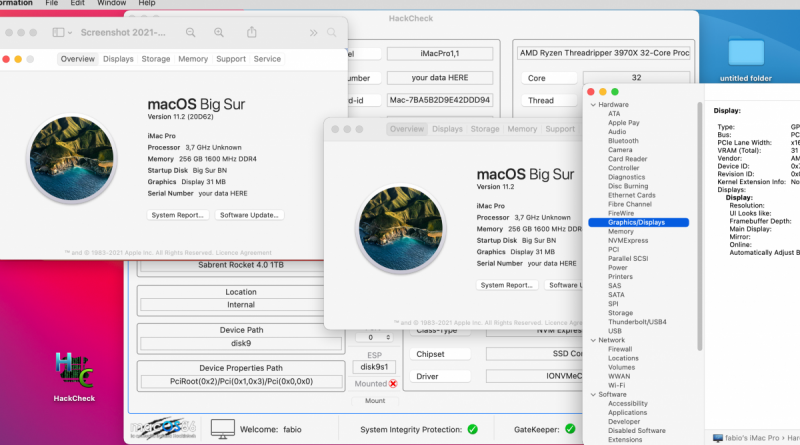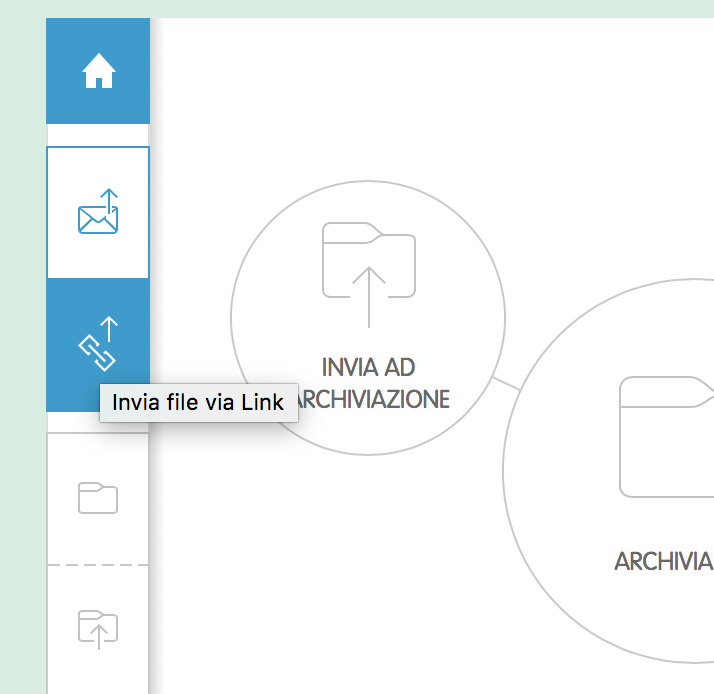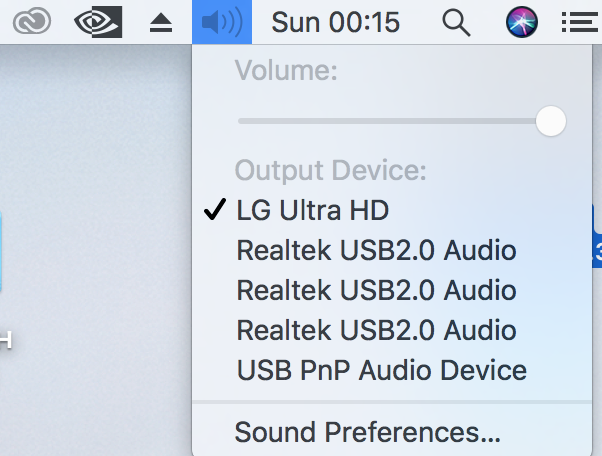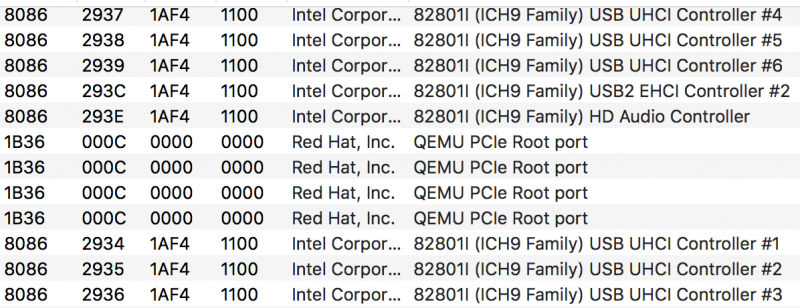Leaderboard
Popular Content
Showing content with the highest reputation on 02/07/2021 in all areas
-
Quando il tuo Mac si “sbaglia”, viene spesso chiamato "crash". Questo è un termine breve, succinto, ma non molto utile a capire cosa è andato storto e come risolverlo. Comprendendo cosa è successo e cosa è stato esattamente quel "crash", otteniamo importanti indizi su cosa fare dopo. Uscita imprevista macOS ha aree protette, incluso il kernel stesso, che le app non dovrebbero essere in grado di influenzare. Ogni app viene eseguita in uno spazio separato, separato da altre app e dallo spazio di sistema protetto. Quindi il tipo più comune di "crash" dovrebbe essere un'app che morde la polvere quando ha fatto qualcosa di sbagliato. Di solito l'app si chiude improvvisamente, per questo viene spesso definita chiusura imprevista. Le uscite impreviste possono verificarsi per molti motivi, ma i più frequenti sono i bug nell'app. Se un'app si chiude ripetutamente in modo imprevisto quando provi a fare la stessa operazione, allora puoi essere abbastanza sicuro che si tratti di un bug in quell'app e dovresti segnalarlo agli sviluppatori dell'app. Naturalmente questo non è necessariamente una questione di colpa: molti di questi bug si verificano quando l'app si aspetta che macOS faccia qualcosa in un modo, e non è così. È quindi probabile che ci sia un periodo in cui gli sviluppatori dell'app danno la colpa a Apple, Apple dice poco e alla fine il problema viene risolto tranquillamente. Quando un'app si chiude inaspettatamente, macOS e tutte le altre app in esecuzione non devono essere interessate, ma a volte l'app, quando sta per uscire, lascia alcuni danni a macOS, ai file archiviati o altrove. Quindi, anche se dovresti essere sicuro di continuare a lavorare e riaprire l'app che si è chiusa, fai attenzione a eventuali segni di comportamenti strani che indicano danni residui. Il riavvio del Mac normalmente lo cancella. Esistono anche diversi motivi per cui macOS ha forzato la chiusura improvvisa della tua app. Se ciò accade quando l'app tenta di avviarsi, ad esempio, potrebbe essere perché si è verificato un errore di firma, ha tentato di accedere alle risorse protette dalla privacy a cui non aveva diritto o un problema con il codice oi file dell'app . Sfortunatamente, nella maggior parte dei casi, sia che si sia chiuso da solo, sia che sia stato forzato da macOS, tutto ciò che vedrai sarà un rapporto sugli arresti anomali, che potrebbe invitarti a riaprire l'app o a inviarlo ad Apple. La lettura dei rapporti sugli arresti anomali è un'attività piuttosto specializzata e normalmente necessita di informazioni dettagliate sul funzionamento di macOS e dell'app che si è chiusa. Se hai la possibilità di inviare il rapporto ad Apple o allo sviluppatore, ti preghiamo di farlo, poiché ciò potrebbe significare che il suo sviluppatore ha la possibilità di vederlo. Se vuoi capire i rapporti sugli arresti anomali, questa vecchia Nota tecnica li spiega e c'è un'intera sessione del WWDC 2018 dedicata all'argomento. Spinning beachball, o hang Più comuni delle uscite inaspettate sono gli “spinning beachball” (palloni da spiaggia che girano). Queste sono occasioni in cui un'app riscontra un problema e visualizza il puntatore come un beachball rotante per indicare che ci sta lavorando. Ciò potrebbe essere dovuto al fatto che hai chiesto all'app di intraprendere qualcosa di enorme: la maggior parte delle app mira a inserire attività di lunga durata in un processo in background e mostrare uno spinner o una barra di avanzamento occupati, ma ciò non è sempre possibile. Finché il pallone da spiaggia non viene visualizzato per troppo tempo, dovresti lasciare che l'app si risolva da sola. I beachball che girano non sono di per sé un'indicazione affidabile che un'app è in difficoltà: il loro significato è semplicemente che l'app in primo piano è troppo impegnata nell'elaborazione per interagire con l'utente al momento. In molte circostanze, questo è abbastanza benigno e l'app è semplicemente impegnata a fare quello che volevi. A volte un'app sembra incapace di riprendersi dal beachball re si blocca, non risponde, consuma i cicli della CPU e non arriva da nessuna parte. Dovresti essere in grado di forzare la chiusura dell'app, quindi puoi riaprirla e provare un approccio diverso. Per farlo, premi contemporaneamente Comando-Opzione + Esc per visualizzare la finestra di dialogo Uscita forzata. Seleziona l'app che si è bloccata, che di solito è contrassegnata in rosso segno che non risponde, quindi fai clic sul pulsante Uscita forzata. L'app verrà quindi chiusa e potrai riavviarla quando desideri e utilizzarla. Questo dovrebbe ripulire tutto correttamente dopo aver forzato la chiusura dell'app, ma come per le chiusure impreviste, a volte lascia macOS e altre app in una situazione instabile, che richiede un riavvio. Quando forzi la chiusura di un'app e, talvolta, in altre occasioni, macOS potrebbe generare automaticamente un rapporto "spindump"; genera anche rapporti "microstackshot" in caso di problemi di prestazioni. Sfortunatamente, interpretarli è davvero possibile solo se capisci come funziona l'app e cosa stava facendo in quel momento. I beachball rotanti ricorrenti in diverse app e il Finder sono una buona indicazione di problemi più generali con macOS piuttosto che con quelle app. Questi si verificano più comunemente quando hai appena aggiornato o aggiornato macOS e suggeriscono un aggiornamento non riuscito o un grave conflitto interno, forse con qualche prodotto di terze parti incompatibile. Una possibile soluzione è avviare in modalità provvisoria (con il tasto Maiusc tenuto premuto), lasciare il Mac per un minuto o due, quindi riavviare in modalità normale. Se ciò non risolve il problema, prova a scaricare e installare l'ultimo aggiornamento Combo o a reinstallare quella versione di macOS, magari in modalità di ripristino. Le estensioni di terze parti e altri software di livello inferiore sono disabilitati in modalità provvisoria, quindi potrresti scoprire che i beachball scompaiono in quella modalità. Tuttavia, anche molte estensioni Apple sono disabilitate e potresti non essere in grado di eseguire molte delle tue app. Kernel panic Le prime versioni di macOS spesso non proteggevano abbastanza bene il kernel e altre parti centrali del sistema e un bug pernicioso in un'app poteva far crollare l'intero sistema. È ora più probabile che ciò si verifichi a seguito di un errore hardware, come un problema di memoria o un guasto improvviso di un disco. Nella forma classica (OS X 10.7 e versioni precedenti), l'intero schermo del Mac diventa grigio e un messaggio multilingue ti informa che macOS ha riscontrato un errore e deve essere riavviato: questo è un kernel panic. Da OS X 10.8 in poi, questo comportamento è cambiato e potresti non essere nemmeno informato del kernel panic. Invece, il tuo Mac potrebbe bloccarsi per un minuto circa, quindi riavviarsi spontaneamente o semplicemente spegnersi del tutto. A meno che tu non gli abbia detto di riavviare o spegnere, questo può essere solo il risultato di un kernel panic. Se il tuo Mac ha un kernel panic, deve riavviare e caricare macOS da zero: il kernel ha subito così tanti danni che non può ripristinarsi in nessun altro modo. Puoi saperne di più su come riconoscere e gestire un panico del kernel qui. Freeze Quando il kernel di macOS e le parti centrali del sistema collassano completamente, potrebbero non essere in grado di continuare abbastanza a lungo da avvisarti con un kernel panic, né da riavviare prontamente. Invece, il tuo Mac si ferma semplicemente come un morto nell'acqua: l'orologio si ferma, non puoi navigare tra le finestre, anzi normalmente non puoi nemmeno muovere il puntatore. Un sintomo interessante che potrebbe avvisarti di un tale blocco è che un Apple Magic TrackPad 2, che è gestito dal software, perde la capacità di fare clic e si sente "morto". Se incappi in un blocco, lascia stare il Mac per un minuto o due, poiché è probabile che si riavvii automaticamente. In caso contrario, è necessario premere e tenere premuto il pulsante di accensione fino a quando non lo si è forzato a spegnersi, attendere alcuni secondi, quindi riavviarlo. Non scollegare o spegnere mai l'alimentazione di rete, tranne in caso di grave emergenza, poiché ciò comporta un alto rischio di causare danni permanenti al tuo Mac, sia al suo software che possibilmente al suo hardware. Come il kernel panic, dovresti vedere un blocco solo se hai un problema hardware. Tuttavia, le versioni successive di El Capitan (10.11.4 e successive) sono note per causare ripetuti blocchi sporadici su alcuni modelli di Mac, inclusi alcuni iMac e MacBook Pro. Questo è stato risolto correttamente solo con il nuovo kernel fornito in macOS Sierra, che per la maggior parte degli utenti è molto più robusto. Sono stati segnalati blocchi anche su alcuni modelli con determinate versioni di firmware. Problemi associati a eventi specifici L'arresto anomalo che si verifica durante l'avvio può essere particolarmente difficile da individuare, soprattutto se impedisce al tuo Mac di avviarsi completamente. Gravi problemi che lasciano il tuo Mac con uno schermo colorato uniforme, in genere nero o blu, di solito indicano un guasto hardware, come una scheda grafica difettosa. I problemi minori vengono spesso risolti riavviando in modalità provvisoria, con il tasto Maiusc tenuto premuto; questo disabilita la maggior parte del software di terze parti e può consentire di capire cosa si sta verificando e affrontarlo. Un altro momento critico in cui si verificano problemi è al “Wake from sleep” (risveglio dal sonno). Ciò normalmente richiede che macOS riattivi l'hardware e potrebbe essere necessario caricare driver e altro software di basso livello. Può provocare uno qualsiasi dei suddetti tipi di incidente. È più insolito andare in crash quando si va in Sleep, ma questo è un altro indicatore utile che può aiutare a restringere la causa. Gli indizi più importanti di tutti? La maggior parte degli eventi di cui sopra vengono registrati con informazioni dettagliate nei log del tuo Mac. In El Capitan e versioni precedenti, puoi sfogliare quelli che utilizzano Console, ma purtroppo Sierra ha introdotto un nuovo sistema di registrazione e Console ora ha un valore molto limitato. Se utilizzi Sierra o versioni successive, dovrai usare applicazioni di terze parti, ma questo è un’altro discorso. (Cit. EclecticLight)3 points
-
Quando si fanno alcune operazioni nel sistema, per completare correttamente è necessario aggiornare la cache dei DNS; i Domain Name System sono delle tabelle di associazione di dati per conversione degli indirizzi web, altrimenti raggiungibili solo tramite un IP numerico. Le operazioni più comuni dove questo necessita, usuali e frequenti sui server e molto meno sui sistemi di utenze personali, sono: - Cambiamenti nel file hosts - variazione dei DNS nell’omonimo pannello di Preferenze Network - Lentezza nel risolvere l’indirizzo web in navigazione Svuotare la cache DNS in Tiger OS X 10.4: lookupd -flushcache Svuotare la cache DNS in Leopard OS X 10.5 e Snow Leopard OS X 10.6: sudo dscacheutil -flushcache Svuotare la cache DNS in Lion OS X 10.7 e Mountain Lion OS X 10.8 sudo killall -HUP mDNSResponder Svuotare la cache DNS in Mavericks OS X 10.9: dscacheutil -flushcache; sudo killall -HUP mDNSResponder Svuotare la cache DNS in Yosemite OS X 10.10: sudo discoveryutil mdnsflushcache;sudo discoveryutil udnsflushcaches Svuotare la cache DNS in El Capitan OS X 10.11, MacOS 10.12 Sierra: sudo dscacheutil -flushcache; sudo killall -HUP mDNSResponder Svuotare la cache DNS in MacOS 10.13 High Sierra, MacOS 10.14 Mojave, MacOS 10.15 Catalina: sudo killall -HUP mDNSResponder Svuotare la cache DNS in MacOS 11 Big Sur: sudo dscacheutil -flushcache; sudo killall -HUP mDNSResponder (Cit.Faxus)3 points
-
Per ora non ci sono opzioni imminenti se non Vega o una serie 5xxx come modelli superiori alla tua attuale2 points
-
se guardi la mia firma..forse capisci che anche io ho pensato lo stesso... ed ho ripiegato su una rx 580 8 Gb poi se sarà il supporto disponibile..si prenderà di nuovo un GPU della serie RX6xxx2 points
-
BT no sd si ,anche questa 0x00 ì scusa non ho capito se devo lasciare cosi o cambiarla ?1 point
-
Quindi tu hai montato una nvidia e una amd e a seconda dell’os fai andare una o l’altra? Chiedo perché nel caso potrebbe essere un’idea “copiarti” l’idea di configurazione1 point
-
vuol dire staccare la batteria tampone per qualche minuto e poi riattaccarla? grazie.1 point
-
non uso sanity checker, si tratta di uno strumento, credo utile per i principianti, ma che vede un suo modo di come configurare il plist uso OCConfigCompare e aggiorno a mano con plist editor aggiungendo/rimuovendo le voci proposte dalla release di confronto del sample di OC1 point
-
1 point
-
.....è da oltre 1 anno che vi è questo "problema".... diciamo che ho scoperto l acqua calda 😅 ,strano ma prima non mi era capitato ,adesso e' tt a posto mi piace avviare Win dalla gui di OC in quanto a blc la vedo un po confusionaria come cosa , parere mio e1 point
-
Ciao veramente è da molto che è così, riguardo a quei fix e il discorso windows 🙂1 point
-
do you remember an old funky group when we were young? Imagination? For now..rx 6xxx support is... Just an illusion 🙂 🙂 also in first beta 11.31 point
-
1 point
-
I have sold (maybe) my 6900xt i will buy it again after a solid drivers support i hope soon...😂1 point
-
1 point
-
1 point
-
@Rox67ernow i am using not so much OSX (no gpu support) but for me reduced set of patches is working well in all my tasks..not problem at all and same beaviour with normal full set.. I am not using Affinity app so i cant say more1 point
-
1 point
-
ciao @Driftwood it's a bit of a contradiction to activate the resize bar and disable 4g ... but if you are trying .... happy for your testing 🙂1 point
-
1 point
-
Sorry vga: none You are using vmware it is not good for your passthrough task1 point
-
Today I have tested on proxmox for the first time with my new amd Vega 64 gpu @dtek I have had only changed my gpu address from 21:00 to 23:00 and my usb controller from 23:00 .3/4 to 25:00.3/4 end system has booted fine with proper gpu acceleration without touching nothing else same efi I have used before all this text lines to say tha t our motherboard does not need any vfio stuff and blocking things.. If you want to use vfio as in your message above you have to put inside correct ids Above seems from a nvidia card and not of your amd try to te read and concentrate about gpu rom declaration if your gpu has no uefi bios.. and stay more simple you can about Linux configuration part, msi trx40 pro needs few adjustment also in gpu passthrough1 point
-
Only to say that @iGPU is the king in this subject and he is studying how to have also usb working on this card1 point
-
another downside is the "bridged device" impassable problem..but also in my opinion Proxmox is better and it could resist also to future upgrade1 point
-
I would avoid to use any kext to improve gpu performance. test GPU with real application like davinci resolve or adobe media encoder if you are not interested only to improve geek bench results😂 by the way In my rigs imacpro stays the best smbios I used from x99 system To trx401 point
-
1 point
-
root@proxmox:~# apt list build-essential asciidoc-base bison flex libdw-dev libelf-dev libiberty-dev libnuma-dev libslang2-dev libssl-dev lz4 xmlto zlib1g-dev dh-make dh-python lintian sphinx-common dpkg-dev Listing... Done asciidoc-base/stable 8.6.10-3 all bison/stable 2:3.3.2.dfsg-1 amd64 build-essential/stable 12.6 amd64 dh-make/stable 2.201802 all dh-python/stable 3.20190308 all dpkg-dev/stable 1.19.7 all flex/stable 2.6.4-6.2 amd64 libdw-dev/stable 0.176-1.1 amd64 libelf-dev/stable 0.176-1.1 amd64 libiberty-dev/stable 20190122-1 amd64 libnuma-dev/stable 2.0.12-1 amd64 libslang2-dev/stable 2.3.2-2 amd64 libssl-dev/stable,stable 1.1.1d-0+deb10u3 amd64 lintian/stable 2.15.0 all lz4/stable 1.8.3-1 amd64 sphinx-common/stable 1.8.4-1 all xmlto/stable 0.0.28-2.1 amd64 zlib1g-dev/stable 1:1.2.11.dfsg-1 amd64 root@proxmox:~#1 point
-
1 point
-
I mean you use an OpenCore.iso to try to install How do you produce this? you can try to download one with VM assistant app you can find in download area this will allow you to see a verbose a not only Apple logo in this way it will be possible to unsderstand better in your VM I can't see any usb device passed, so you shouldn't have a mouse and a keyboard also if you pass your initial hang1 point
-
@mclarenf1 which tutorial have you followed? if you have followed guide here you have Apple logo only after first installation steps passed opencore efi we propose has verbose mode active check well all steps you do to prepare installation it needs few minutes of a bit of attention👍1 point
-
maybe I mess my high Sierra disk in some way..I am now on 5.7.8 and I have not weird instant reboot I will try again to start with latest kernel because I know probably is a my own problem 🙂 by the way..I have never seen instant reboot in this rig..today about five times..only surfing with safari 🙂1 point
-
@all I am trying to revert to old kernel version because I have seen a sort of instability I am not able to debug Yesterday I have had a perfect day working with @meina222 compiled 5.8 kernel today I have installed Big Sur beta 4 in a ssd disk I connect on an external data box after that my high Sierra became unstable no clue if there is a relation for now I can't reverse old kernel with method I use the very weird thing is that in Catalina and in big Sur I have no problem in High Sierra my 2 ten TB drive (exfat) are seen after some minutes..and some times system reboots itself1 point
-
@tsongzin these preliminary steps of your learning curve, I will suggest to understand well which parameters in vfio.conf and in blacklist.conf inhibit your system to a proper use of shell in host During tests, adding cards or moving it or only change some parameters in vm could produce problem to access to host from other pc So our safe (without reinstalling all or unmounting/mounting spare gfx card is the chance to be able to modify things via shell another matter for me is to understand why you block all that stuff and what kind of advantages you get from this type of configuration, with you I mean most of you who in part followed my guide 🙂1 point
-
I am using only my guest to use my thread ripper machine Sometimes during my "bleeding edge test" I have problem and I have to use a spare pc to solve normally I turn on my thread ripper and when shell is available I execute from it qm start 100 to start my main VM when I have used to add in vfio.conf my GPU or to blacklist nouveau or Nvidia drivers.. my system to boot needs of a spare pc or an automatic vm 100 booting option enable you can see it in macos86.it you tube channel 🙂 check framed window..there only 2 verbose initial lines and then vm starts in automatic way in big window no block are there and I see regular verbose and shell1 point
-
1 point
-
no you don't have to register you can upload file for free without registration1 point
-
1 point
-
you can use ssdt to refine some aspect, but not necessary for Host cpu.. Oc developer have done some modify which allows us to boot with a minimal set of "old" vanilla patches and have our cpu recognised as AMD Thread ripper in many app Aestetycally much better than Penryn core duo output with 64 cores 🙂1 point
-
@tsongz are you sure you need all those ssdt to have cpu as host booting fine? In my MSI board no need for any of these ssdt, only to configure vm config and config.plist in open core properly (for owned hardware I mean)1 point
-
dear @tsongz, I was tempted to delete your initial post on this forum, but after thinking about it a bit I decided to leave it without deleting anything you wrote, because this forum has some no restrictive politics and I would live to give also a second chance to understand better 😉 . however, it seems ungrateful to me to mention all the experiences you have had during your learning process for several reasons: 1) mention Sherlocks' guides. try reading in the comments of catalina or highsierra and you will understand who was the first to tell the hackintosh community how to solve the problem of the ruined text in verbose mode and beyond with clover..using Opencore I mean 2) you also mention Pavo's github, I often compare myself with Pavo who started his journey by reading my guide (read his credits ), by the way do it too, you could find some interesting ideas from this 3) you also mention KGP, but I prefer them to fly over as there is little to say. the main thing that bothered me and that is disrespectful for the forum that hosts us is the advertising of "important" tools to be able to install OSX. Reading the guide carefully you will discover that it is possible to have everything using only two applications in our download area (and without modesty whatsoever, often copied with or without authorization and published on other international forums) I am writing this not to magnify or incense my work but to give due credit to the efforts made by our admin once I had found the way to have OSX installed with Proxmox on our "UNVANILLA" system 🙂 said this: welcome to our forum and I hope you will stay and actively participate in its growth 😉1 point
-
Sorry I do not understand well this sentence our audio is a particular USB audio you should see Realtek USB 2.0 Audio and it is not related to AppleAlc kext removing in cfg you posted above ich9 audio multimedia you will not see in your PCI device: also if you comment usb part always in that file you will miss all intel (faked) USB useful to pass as single device via web interface any device you connect without passing an entire USB controller:1 point
-
I am asking for @Fjallefaruser he has a pretty similar configuration of yours but he has problem to pass sata controller for now i think it is also related to a wrong proxmox installation or old kernel installed (5.34.1 or similar) I am asking to you an @Driftwood both of you have a similar rig1 point
-
@Fjallefaryou can discuss here of your problem with as rock creator @Driftwood and other as rock users can assist in optimal way if you have some problem 🙂1 point
-
@valmeidapost here your problem i think Radeon VII users could help you to pass your hang1 point
-
maybe you have to take a look here (You AMD Navi GPU owner I mean 🙂 ) I have asked to include Navi patch on zen2 kernel 🙂 https://github.com/fabianishere/pve-edge-kernel/issues/51 point
-
guide updated with my latest configurations and kernel I use to boot with Proxmox in my rig in the following OS: 1)windows 2) OSX from High Sierra to Big Sur beta 2 (no beta 3 for now) I use an EFI with Opencore 0.6.0 you can download with VM Assistant with following terminal command: VM assistant -doc proxmox iso format.1 point





